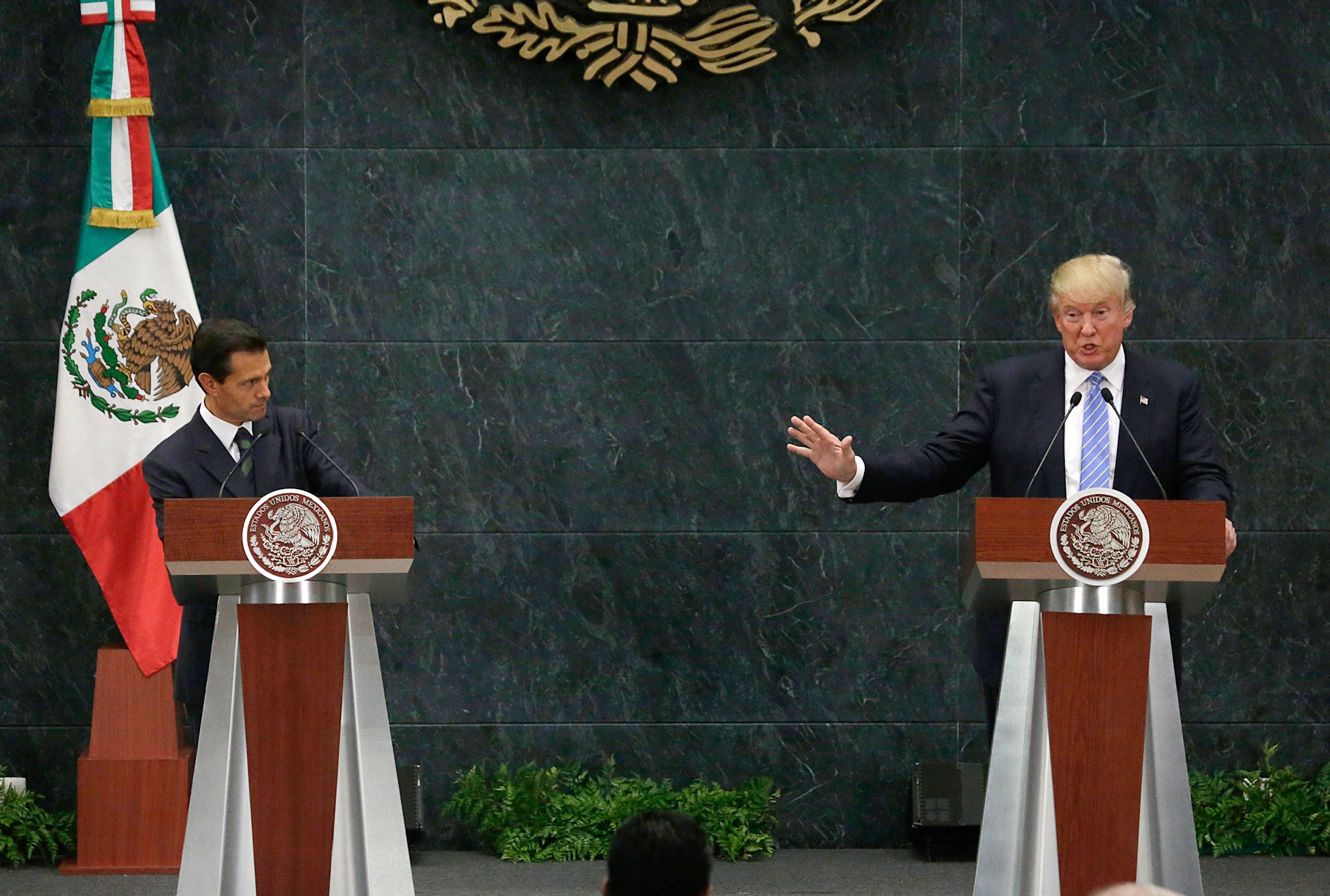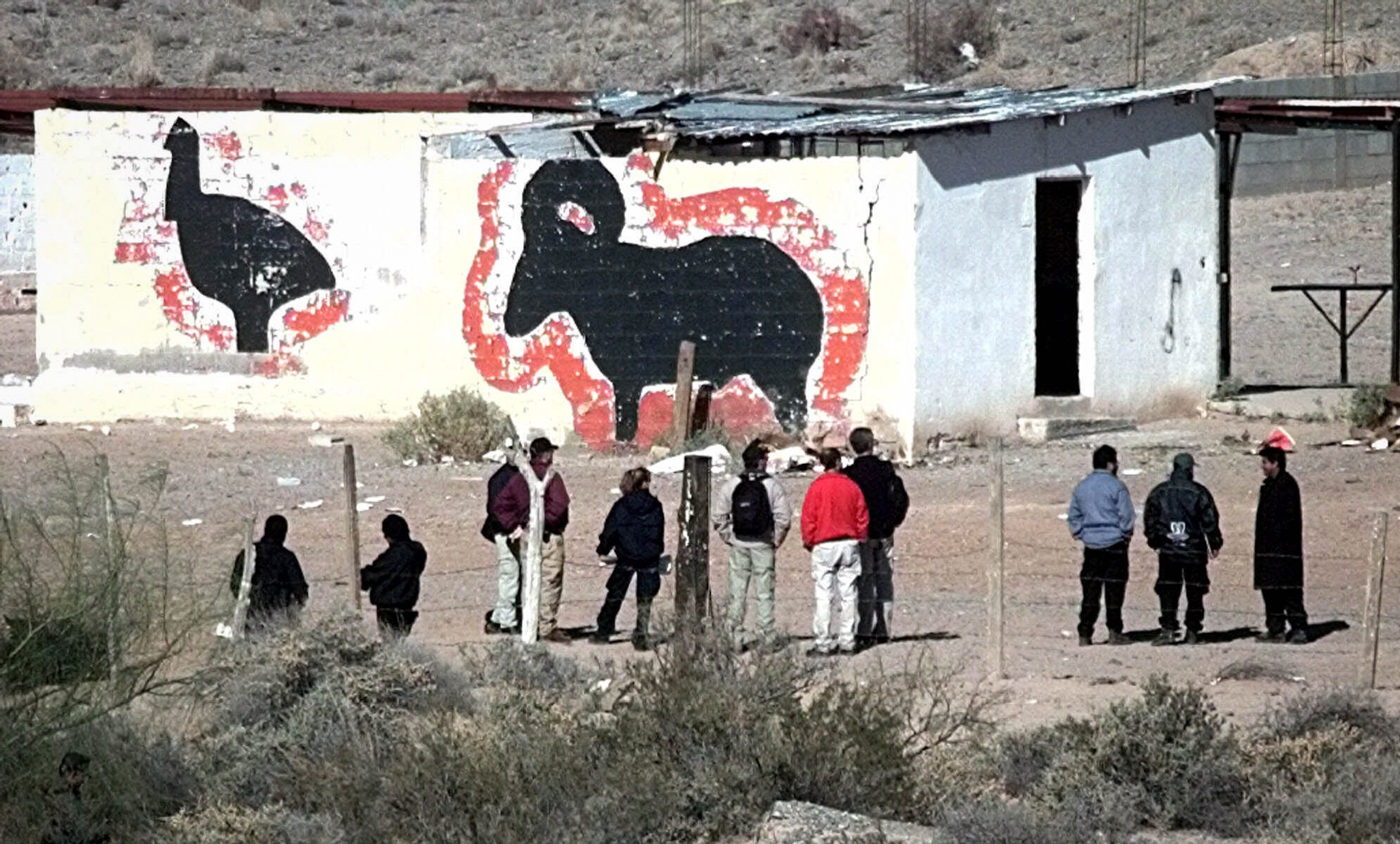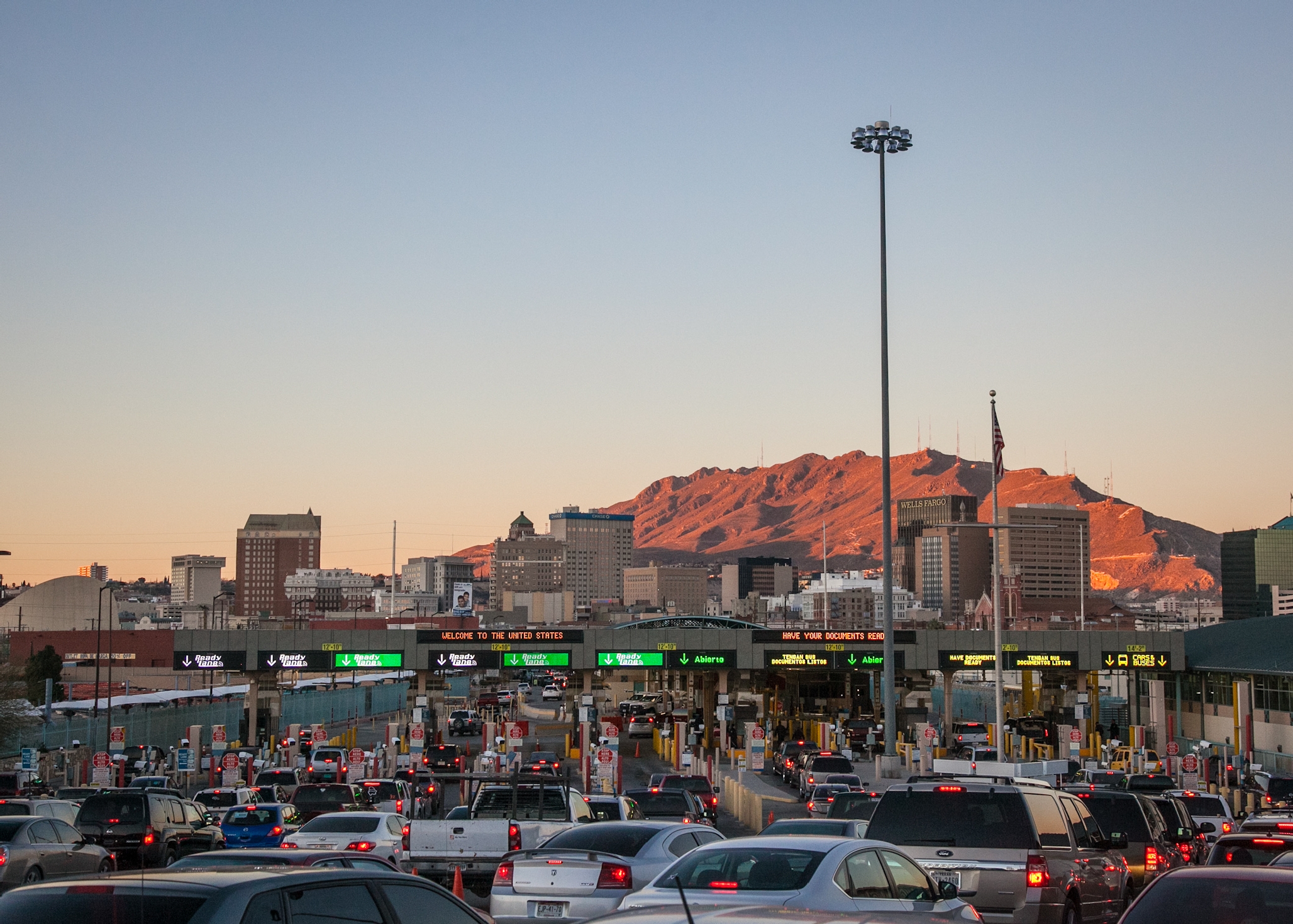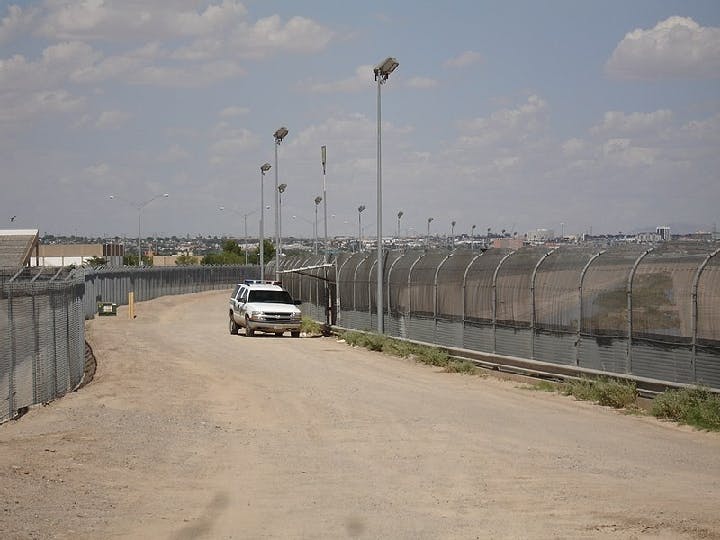Spring 2017
The Scotosis in the U.S.-Mexico Relationship
– Sergio Aguayo
Will the Trump era usher in the realization that tackling organized crime is a shared U.S.-Mexican responsibility?
Donald Trump set off a number of alarms over the state of the U.S.-Mexico relationship, which had been stagnating in complacence for too long. Now, in the spring of 2017, it seems that the immediate state of emergency is behind us, so I will take this opportunity to analyze several angles that have not been well considered regarding these neighbors’ relationship.
In his 1957 work, Insight: A Study in Human Understanding, the Jesuit philosopher Bernard Lonergan uses the word “scotosis” to denote that very human tendency to avoid complicated or unsettling issues. By ignoring the “relevant questions,” we are unable to reach a balanced and complete perspective. In the political realm, a leader’s scotosis will express, influence, or reaffirm what groups in society believe and want. This all became evident in the 2016 U.S. presidential campaign.
Between June 2015 and the first few weeks of 2017, Donald Trump continually accused Mexico of sending rapists, criminals, and drug dealers to the United States. According to his diagnosis, Mexican cartels — protected by the corrupt Mexican government — are taking advantage of the American establishment’s lukewarm stance. To this multimillionaire, the solution lay in the massive deportation of Mexicans and in the construction of an “impenetrable, physical, tall, powerful, beautiful…wall,” with an additional avenging condition: Mexico would pay for it. This idea was acclaimed by multitudes of people who believe Mexicans are a major obstacle to the “Make America Great Again” dream. On April 12, 2017, the Wall Street Journal summarized everything that had happened in the first few months of this year: “Earlier this year, U.S.-Mexican relations hit their worst crisis in decades when Presidents Donald Trump and Enrique Peña Nieto quarreled over who would pay for a proposed border wall.” However, “Mr. Trump, at the urging of senior aides, stopped attacking Mexico on Twitter and in public statements, opening up space to officials from both countries to markedly improve ties since then, U.S. and Mexican officials say.”

I would draw three lessons from this storm of rhetoric. First, a broad sector of U.S. society holds a negative view of Mexico. Second, organized crime is still the most variable and unpredictable factor in the bilateral relationship. Finally, both governments lack the will to get past this scotosis. As such, the task would be more appropriate for what Margaret Keck and Kathryn Sikkink call transnational advocacy networks.
Veiled behind Trump’s anti-Mexico discourse is the conviction held by many Americans that they are an exceptional people — that they are, as Stanley Hoffman wrote, the “favorites of history.” Thomas Jefferson wrote that they were “the hope of the world,” Abraham Lincoln believed they were the “last and best hope on earth,” and Ronald Reagan stated that American citizens were “freer than any other people.”
For them, life has become miserable in the age of globalization. It is easier to blame “others,” especially when the “others” are a trinity of strange skins and tongues: Mexico, China, and Islam.
If American citizens were raised on these ideas, the bitterness and rage of some Trump supporters would appear logical. For them, life has become miserable in the age of globalization. It is easier to blame “others,” especially when the “others” are a trinity of strange skins and tongues: Mexico, China, and Islam. Denying the power and corruption of Mexican cartels, which have reached a level unprecedented in history, would be ridiculous. Nonetheless, their growth and empowerment cannot be divorced from the influence of the United States. A century ago, the New York and Chicago mafias exported their business model to Mexican cartels. American drug addictions have filled the pockets of Mexican criminals. Businesses in the United States produce and sell arms, which cartels then use to terrorize the population and fight the Mexican armed forces as equals.

It is here that we can find the bilateral relation’s most deep-rooted scotosis. Naturally, in the National Rifle Association’s files, I was unable to find any acknowledgment or recognition of contraband arms sales to Mexico, or of their human costs. During the 2016 presidential campaign, President Barack Obama, Donald Trump, and Hillary Clinton inexcusably failed to mention one evident fact: the United States shares responsibility in the empowering of Mexican organized crime. Furthermore, the vitality and scope of this scotosis has only been enabled by the Mexican elite’s failure to remind the United States of this responsibility. Throughout the 2016 campaign, Enrique Peña Nieto never openly rejected Donald Trump’s diagnosis that Mexico was the reason for American malaise. There was only one exception: Peña Nieto’s speech at a press conference during Trump’s visit to Los Pinos in August 2016.
On that morning, Peña Nieto called Trump’s vision “incomplete…because it does not account for the illegal flows going south [with] arms and cash money.” This traffic strengthens “cartels and other criminal organizations that generate violence in Mexico and make money off of drug sales in the United States,” he said. The Mexican president called for adopting “a comprehensive focus.” It is a shame that this part of his speech came at the conclusion, and the controversy surrounding Trump’s visit completely eclipsed the idea. Moreover, the policies of the Mexican state are very far from the “comprehensive focus” that would be required to contain and stop the threat that organized crime poses for Mexico, the United States, and other countries in the region.
How can we move toward a regional and comprehensive solution? How can we eradicate this scotosis that hinders any policymaking that would actually stand a chance against the magnitude of the risks? In his 1976 book, Cultural Creation in Modern Society, the philosopher Lucien Goldmann offers a solution:
Every group tends to have an adequate knowledge of reality; but its knowledge can extend only up to a maximum horizon which is compatible with its existence. Beyond this horizon, information can only be received if the group’s structure is transformed; just as the case of individual obstacles, where information can be received only if the individual’s psychic structure is transformed.
For both countries, increasing the scope of the “maximum horizon” of knowledge is a matter of national security and respect for human dignity. In the short term, I believe it would be very challenging for governments to curb their scotosis. It could even get worse if President Trump resumes his offense campaign against Mexico.

In 1975, I attended the School of Advanced International Studies (SAIS) at Johns Hopkins University. This was a time when Mexico was undergoing a lot of change. A new world was opening up, and for the first time since the Mexican-American War (1846–48), academic programs to study our neighboring relationship started opening up. Still, as Alan Riding rightly put it, we were “distant neighbors.”
I barely spoke English at the time, and my understanding of American culture was severely lacking. At SAIS, I had the privilege of being close to major actors who educated me about the debate under way on the essence, mission, and future of the United States after the Vietnam War; the assassinations of John F. Kennedy and Martin Luther King, Jr.; the civil rights movement; the sexual revolution; and, of course, Watergate — all of which were sharp blows to the United States’ creed of exceptionality. The United States eventually got past this fragmentation, and parts of society (and some of the elite) did change their views of Mexico and Mexicans.
The elite increasingly understood each other, but at a distance the rest of the population in both countries saw both negative and positive consequences to tightening the bilateral relationship.
In these decades, misunderstandings between Mexico and the United States were fewer and farther between. We are now diverse neighbors who increasingly understand each other, though our understanding varies depending on the subject. In this unfinished process of getting to know each other, the 1994 North American Free Trade Agreement (NAFTA) was a major step. President Carlos Salinas de Gortari, who knew the rules of the American democracy game, convinced the establishment of NAFTA’s virtues. In Mexico, Salinas invested the vestiges of presidential authoritarianism that were still at his disposal in order to push the country to accept a change in its deep-rooted historical paradigm. According to Salinas, being a neighbor of the United States was no longer a cause for distress, but a cause for celebration. The elite increasingly understood each other, but at a distance the rest of the population in both countries saw both negative and positive consequences of tightening the bilateral relationship.

At the same time, both countries continued to enable the spread of organized crime. Persistent failure to understand this problem — and the political and cultural scotosis that prevents further engagement in the issue — periodically turn our relationship on its head. From the border shutdowns that were integral to Operation Intercept, President Richard Nixon’s antidrug action in 1969, to the assassination of Drug Enforcement Agency agent Enrique Camarena in 1985, and through to Donald Trump’s year-and-a-half of insults directed at Mexico, there is proof that the cross-border relationship is continually uneasy.
And what can we do about it? In my forthcoming book about the history of the American mafia and Mexican cartels, I draw several conclusions to explain the reasons for both countries' scotosis on this longstanding issue. On both sides of the border, the elites have done everything within their reach to deny the existence of organized crime, and they recognize mafias and cartels only after a mixture of scandals and criticisms from public officials, academics, and journalists make the problem too big to continue ignoring.
Furthermore, in their strategies, neither group has assumed the fully binational and regional nature of the threat. From 1920 through 1957, the United States rejected the notion that there were mafia organizations. The American mafia was finally made public when the police raided the Apalachin meeting in southern New York state in November 1957. A long search period followed, and in 1970, the U.S. Congress approved the RICO (Racketeer Influenced and Corrupt Organizations) Act. In 1986, the heads of New York’s “Five Families” were indicted. The politics of “beheading” and fragmenting the Families were relatively successful — because the process was created within the framework of American institutionalism. Yet, transposing this experience to devise a strategy for the entire region was a mistake. In Mexico, this policy has been an utter failure. Although efforts have been made to break up the larger cartels, "beheading" them by killing or incarcerating their leaders, this has led to a fragmentation that has made it more difficult to monitor their activities. Instead of several large cartels, Mexican law enforcement must now contend with approximately 250 smaller groups that are inflicting a high social cost at home and that continue to export narcotics to the United States.
In 1987, Miguel de la Madrid was the first Mexican president to declare that drug trafficking was the main threat to society. He was practically forced to say this after it was discovered that the Mexican police had protected the Cartel de Guadalajara, which had tortured and executed Enrique Camarena in 1985. Remarkably, three subsequent presidents failed to recognize the problem or devise adequate policies to address its magnitude. Felipe Calderón Hinojosa, president from 2006 to 2012, launched the armed forces — a disheveled state’s last resort — to fight off an unknown enemy. The boldness and ignorance of this move led to a bloodbath that ultimately empowered the cartels. The strategy has improved but still faces some major shortcomings: it treats the conflict’s victims with indifference and has proven unable to demand that the United States fully assume its share of the responsibility. The strategy is neither comprehensive nor regional.
If those who govern are unwilling or unable to act to address recognized problems, then society has to demand that they fully reassess their strategies and policies.
If those who govern are unwilling or unable to act to address recognized problems, then society has to demand that they fully reassess their strategies and policies. This is an enormous problem that involves highly sensitive dimensions in both countries. If we take history into account, the starting point should come with transforming the elite’s maximum horizon of understanding and then moving on to society as a whole. The fundamental thesis relies on a single concept: shared responsibility. Think tanks and civil society organizations, especially those that bring together political, economic, and societal representatives to discuss the most critical issues for the bilateral relationship, are best placed to play a fundamental role in calling on both Mexican and American institutions to break through the scotosis that has shaped the lack of real responses from both countries’ political leaderships.
Regardless of who is in the White House and Los Pinos, organized crime will continue to pose a central threat to both countries. The best strategy would be to increase the maximum horizon of understanding to fight the scotosis that hinders both countries from assuming shared responsibility. Instead of pointing fingers at the “other,” we should focus on rooting out the deep-seated cancer that started in the United States and spread through the rest of the hemisphere. For now, Mexico is the temporary epicenter of a problem that will continue to exist and extend its reach through this part of the world.
Sergio Aguayo is a professor at El Colegio de México and a Fellow at the FXB Center for Health and Human Rights at the Harvard School of Public Health.
Cover photo courtesy of Wikimedia Commons
